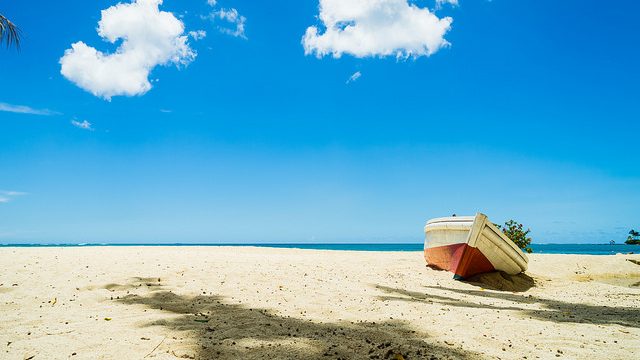Thinking of Visiting Mauritius? Mauritius is a unique island located some 2,000 km off the southeast coast of Africa, and it is as the ranked 169th largest nation in the world. The Republic of Mauritius (also called Republique de Maurice in French) comprises the main Island of Mauritius and other small bordering islands. Mauritius is a refreshing blend of nature, people and cultures, set against the backdrop of a country that is embracing growth and development. These tips can serve as your initial travel guide to Mauritius.
Getting to know Mauritius
Consider its geography. Mauritius is a volcanic and mountainous island, situated in the Indian Ocean. Away from the coastal areas, what greets you are vast expanses of fertile plains that support the growth of crops like sugar cane, which has helped boost the local economy. This topography is boosted by a tropical climate with warm and sunny weather for a greater part of the year. Residents and visitors praise the soothing sea breeze that wash across the island, especially from the east coast.
Mauritius has a diverse population, and this diversity accounts for its strong sense of culture and heritage. The island comprises ethnicities such as the Indians, Africans, Europeans (mostly French) as well as Chinese. This eclectic mix in the population means that Mauritians are warm, accommodating and tolerant.
Visiting Mauritius
Where to Stay
Because of its tourism appeal, Mauritius has plenty of hotels and resorts. For hotels, you will be presented with 3, 4 and 5-star hotels. These hotels are concentrated along the coastal regions, and they offer excellent services to their clients. You can expect the same level of service at most beach resorts in Mauritius. These resorts offer an array of services including child-minding/babysitting and windsurfing; and these are found along the scenic beaches of the island.
Financial Considerations
The nation’s currency is called the Mauritian Rupee (MUR), 1 Rp = about 3 cents. The notes exist in denominations of 2,000, 1,000, 500, 200, 100, 50 and 25. There are also coins in values of 10, 5, and 1. You will do well to have your foreign currency exchanged at the point of entry. It is advisable to have a mix of funding sources including cash and ATM cards. The most widely used ATM cards are Visa and MasterCard.
Local laws allow you to bring in some goods, duty-free. These goods include a certain amount of tobacco products, measured quantities of spirits and wines as well as goods pegged at a particular value.
Things to Do
Mauritius is the perfect haven for the adventurous visitor. Many activities, sights, and sounds will completely fill up your itinerary.
Take A Hike Up The Moka Mountains
The Moka mountains was once an active volcano and it also serves as one of the two highest peaks in the country. From the surrounding city of Moka, you can entertain yourself with tasty local food, drink and interact with locals and visitors alike. Hotels and resorts have arrangements with tour guides who can take you to the heights of the mountain, safely.
Deep Sea Fishing
If you have an affinity for water and fishing, then you can indulge your desires in Mauritius. Depending on the time of the year, the waters surrounding the island are full of different species of fish including blue or black marlin, sailfish, wahoo, yellow fin tuna, giant trevally, dogtooth tuna, bonito, dolphin fish, sharks and much more.
You can safely scout these waters because there are fishing businesses that provide boats equipped with VHF radio, mobile telephone, GPS navigation system, radar, radio telephone, safety equipment, Penn International reels, life jackets, medical kits, fire extinguishers, flares, and other fishing equipment such as fighting chairs and rods. There are also guides who are experienced in determining the time of day you can go out and have a bountiful fishing expedition.
Scuba Diving
The waters of Mauritius are replete with coral reefs, multi-colored marine life, ship wrecks dating back to the 18th and 19th centuries, or ships sunk more recently which create captivating artificial reefs. You can take advantage of numerous dive sites across the country including the Cathedral, situated off the Flic en Flac in Western Mauritius, the Whale Rock, the Roche Zoo as well as the submerged crater close to Ile Ronde. A perfect time of the year to go scuba diving in Mauritius is between November and April.
You will have to adhere strictly to all the rules and regulations regarding scuba diving as stipulated by The Mauritius Scuba Diving Association (MSDA).
During your time on the island, you can also engage in other activities such as tandem skydiving, watching dolphins, hiking/trekking, horse racing, water skiing, parasailing among others.
Visiting Beaches
Your trip to Mauritius is arguably incomplete without experiencing the island’s beautiful stretches of the natural real estate. The beaches that dot the landscape in Mauritius are noted for their white sands, the turquoise blue lagoons, and the clean, beautiful warm seawater. You are spoiled for choice as you can find beaches in the north, south, east and western coasts of the country. Another major attraction is that these beaches are public; nevertheless, they are well run/managed and you have the opportunity to interact with fellow tourists and visitors in a convivial atmosphere.
The famous beaches include the Bluebay, the Belle Mare, the Flic en Flac, and the Bay of Tamarin among others. There are resorts for you to lodge in for the duration of your stay and you can engage in exciting activities such as snorkeling, surfing, swimming and beach volleyball.
